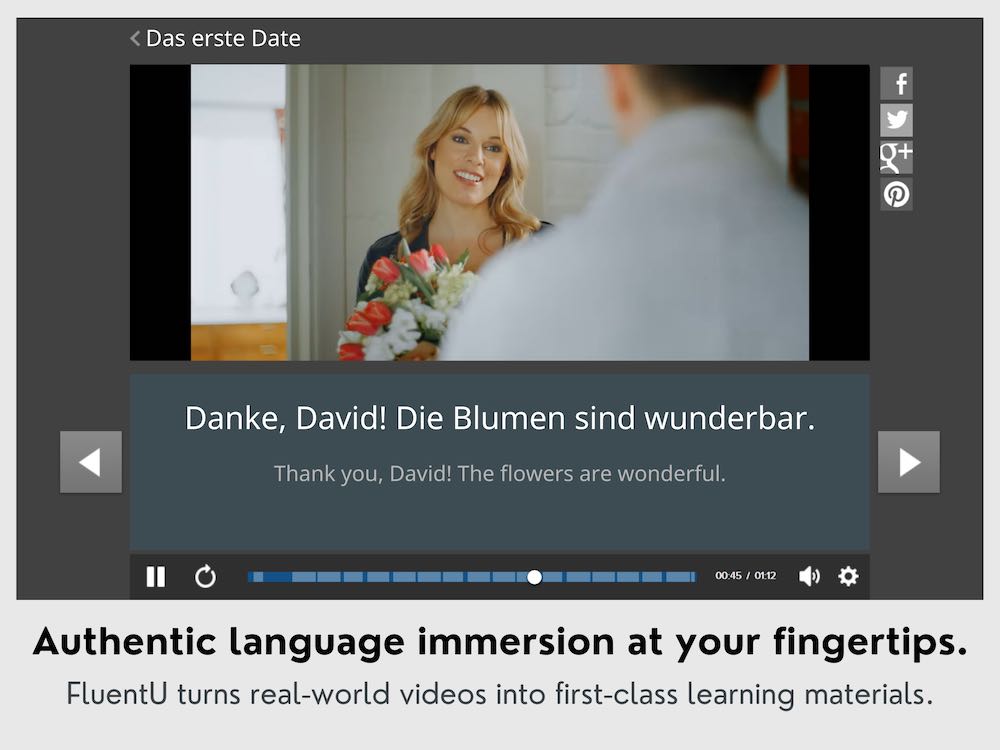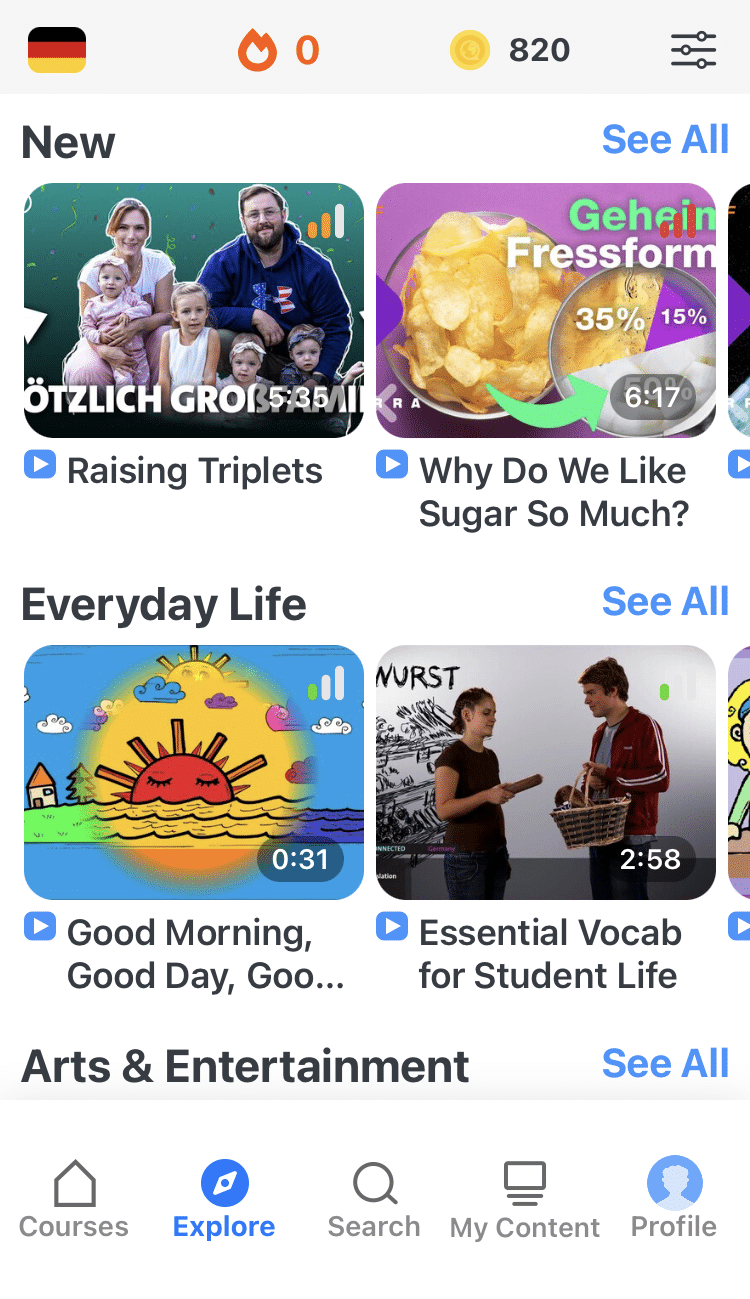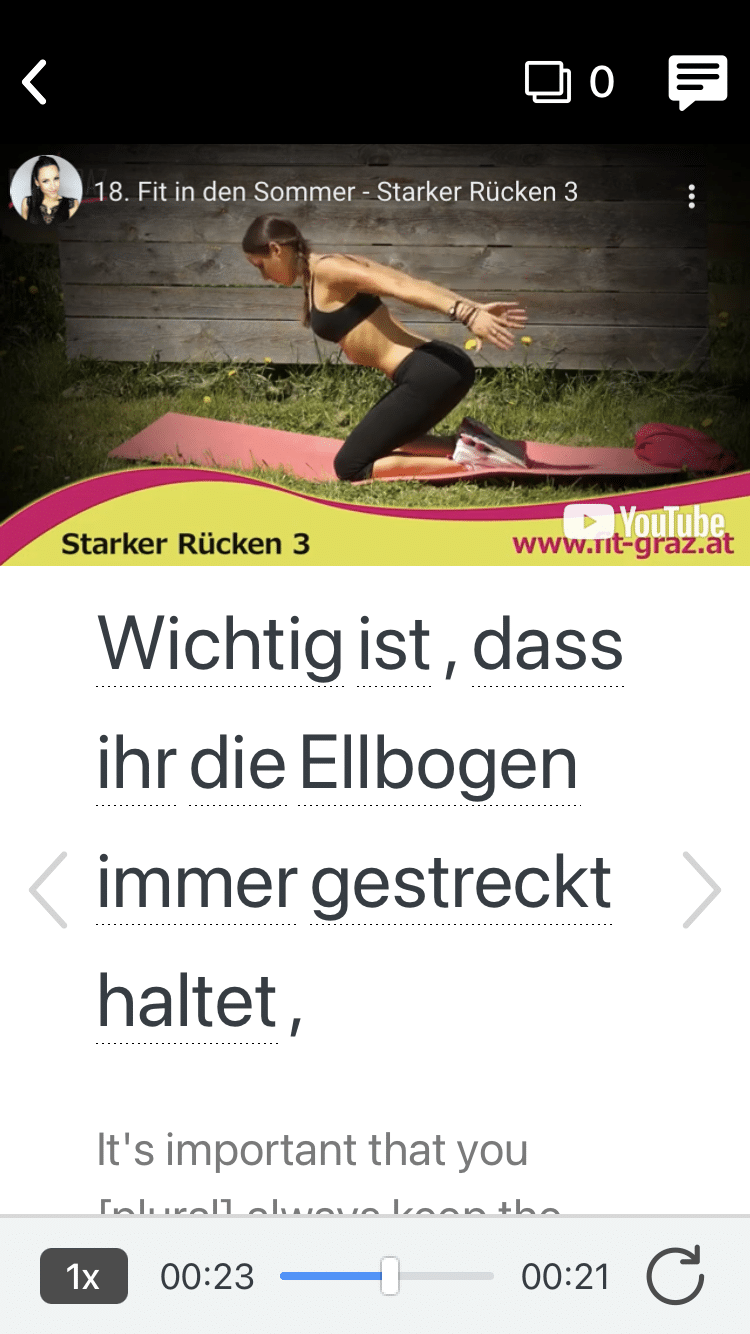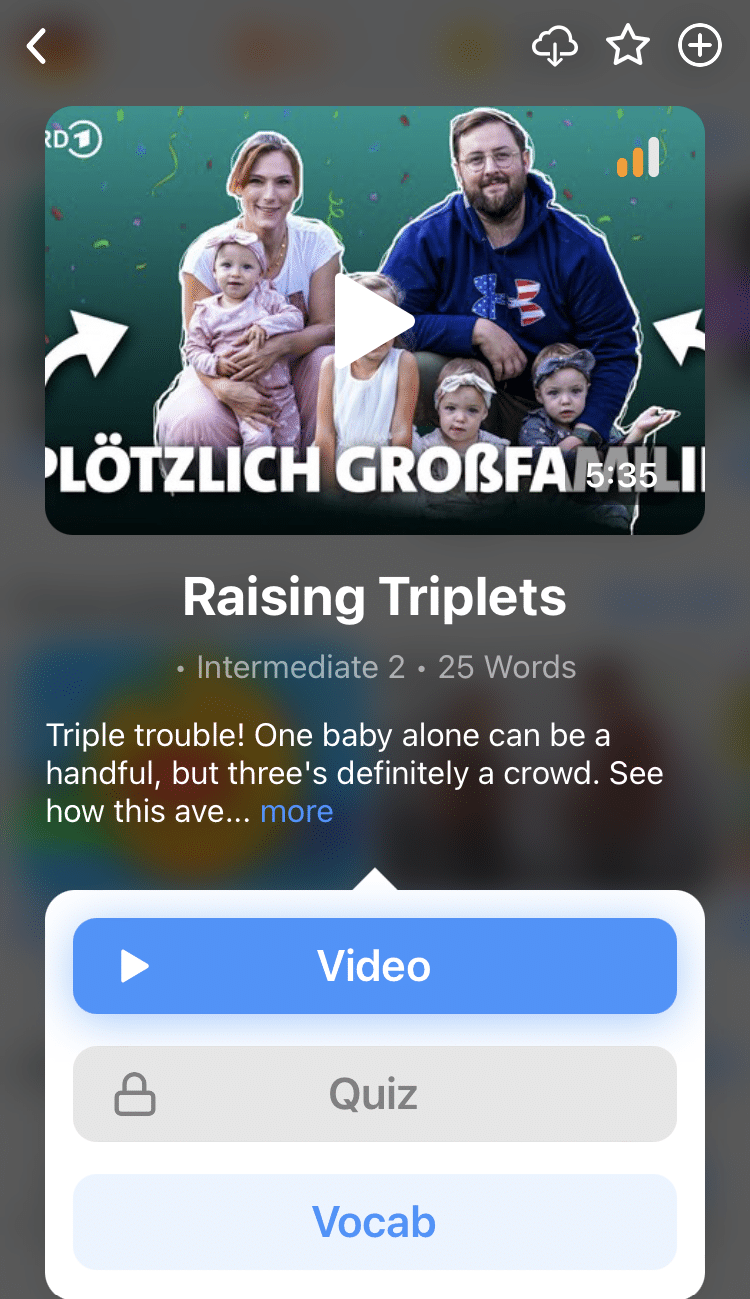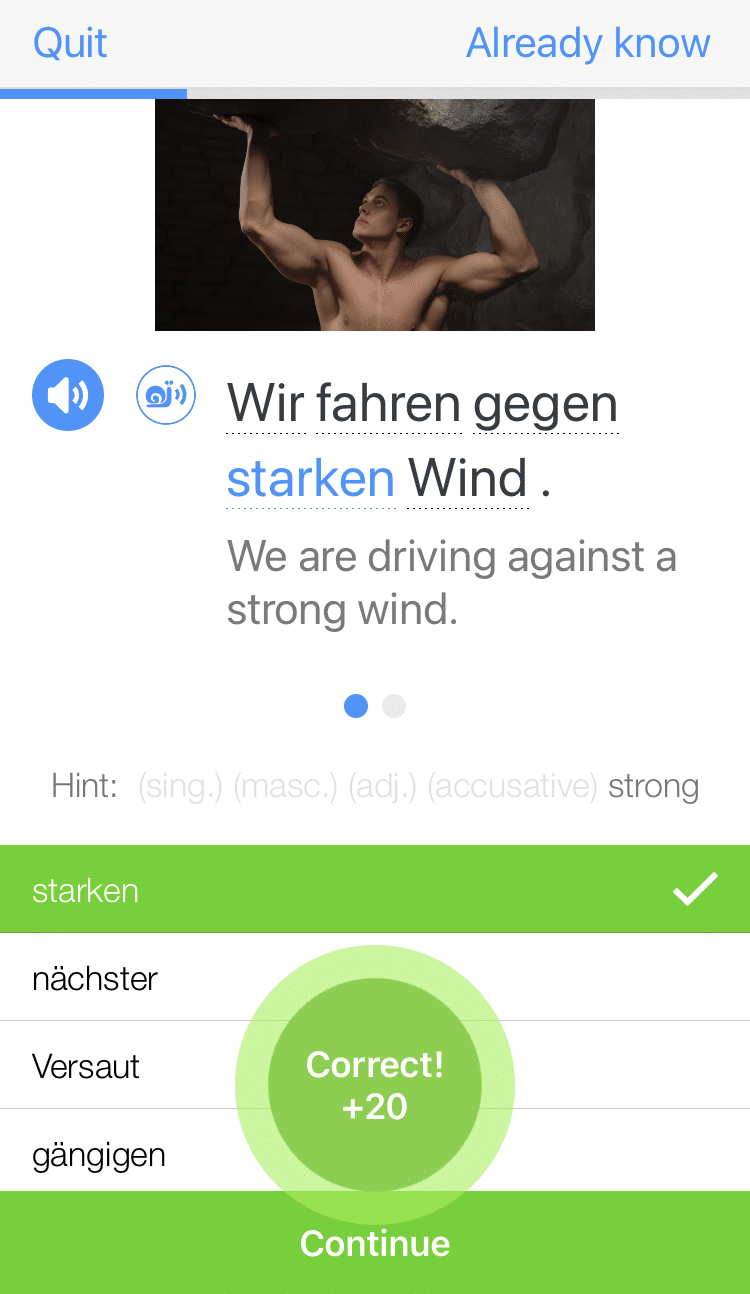
German Punctuation
What’s a language without punctuation?
Just like in your native language, you’ll need proper German punctuation to write anything from emails to essays without driving your reader crazy.
Luckily, German punctuation marks are practically identical to ones found across other Western languages, especially English.
There are just a handful of important differences, which we’ll teach you in this post to make you a German punctuation pro in no time.
Contents
- Similarities Between English and German Punctuation
- 1. Perfecting the Period
- 2. Conquering the Comma
- 3. Appreciating the Apostrophe
- 4. Questioning the Quotation Marks
- And One More Thing...
Download: This blog post is available as a convenient and portable PDF that you can take anywhere. Click here to get a copy. (Download)
Similarities Between English and German Punctuation
der Punkt period . das Komma comma , das Fragezeichen question mark ? das Ausrufezeichen exclamation point ! der Doppelpunkt colon : das Semikolon semicolon ; der Apostroph apostrophe '
Before stressing out about not being able to write in German, take a look at what you already know! The Apostroph, Komma, Semikolon (apostrophe, comma, semicolon) and other punctuation marks are just some similarities that you may already recognize from the names alone.
Even the punctuation usage is the same as in English in many cases. Our trusty Punkt (period) also serves to end sentences in German, items in lists are still separated with the Komma (comma) and questions are designated with a Fragezeichen (question mark) at the end.
That said, there are several unique functions that I’ll get into below.
1. Perfecting the Period
Periods get a lot more use in German than in English, where the mark is typically just used to end sentences. As you can see in the example below, this little dot indicates ordinal numbers, tells time and substitutes the comma in numbers past the hundreds.
- Am 9. November 1989 um 23.30 Uhr fiel die Berliner Mauer. (On the 9th of November 1989, at 11:30 p.m., the Berlin Wall fell.)
Here’s how to use the period in those varied settings.
Periods in Ordinal Numbers and Dates
Ordinal numbers are numbers that show order, such as “1st” or “3rd.” In written German, a period follows the digit to turn it into an ordinal number. Ordinal numbers are widely seen in dates, as in the examples below:
- Weihnachten ist am 25. Dezember. (Christmas is on the 25th of December.)
- Ich habe am 16. Geburtstag. (My birthday is on the 16th.)
- 29.9.1996 (September 29th, 1996)
Attention, Americans! In Germany, dates are written out in the European style, as day.month.year.
Periods for Telling Time
Periods are occasionally used to tell time in German. Up until the mid-1990s, using a period to separate time was standard in Germany, until this later changed to a standard colon.
Both a colon (as in English) and periods are still used interchangeably to separate hour from minutes, so just know that either one goes!
- 13.57 (1:57 p.m.)
- 5.38 (5:38 a.m.)
Remember that Germany uses the 24-hour clock (a.k.a. military time).
Periods in Large Numbers
If you’ve ever had much experience with German numbers, you may’ve noticed a peculiarity once numbers seep over the hundreds.
Whereas you might commonly expect the number “one thousand twenty-eight” to be written as 1,028, in German the period swaps with the comma and you get 1.028. The same switch takes place with the decimal point, which then becomes a comma as we’ll cover in the next section!
2. Conquering the Comma
Commas seem like a pretty straightforward tool, until you run into head scratching German word order. The German comma must be used in relative clauses, in numbers and after subordinate clauses.
Unlike English, where the comma is often a stylistic choice indicating a pause, these pesky commas are considered grammatically essential in relative and subordinate clauses, even if you wouldn’t naturally pause at that part of the sentence.
What’s more, commas can also change the meaning of the sentence: if you’ve been lazy with your commas so far, the examples below may show you just how important the smallest details are. That tiny mark makes a difference between making sure everyone gets to the dinner table and everyone thinking you’re a cannibal.
- Setz dich hin, wir essen, Fabian! (Sit down, we’re eating, Fabian!)
— Fabian is late for dinner.
- Setz dich hin, wir essen Fabian! (Sit down, we’re eating Fabian!)
— Fabian should be worried.
The bright side is that there’s a method to the madness!
Commas in Relative Clauses
Relative clauses describe a noun with an additional snippet of information.
Having a comma before the relative clause indicates that you’re further describing that noun, rather than just continuing on with your sentence. Further, because relative pronouns sometimes resemble articles (der, die, das) a comma helps differentiate the two.
Here’s how to structure and punctuate sentences with relative clauses:
First part of sentence ending with noun + comma + noun descriptor
Longer sentences may look like this:
First part of sentence ending with noun + comma + noun descriptor + comma + rest of sentence
Here are some sentences to illustrate comma placement in relative clauses:
- Ich habe einen Freund, der in Berlin wohnt. (I have a friend who lives in Berlin.)
- Wir gehen regelmäßig in die Kneipe, wo wir uns zum ersten Mal getroffen haben. (We regularly go to the bar where we first met.)
Commas Used as Decimal Points
As explained above with periods, punctuation used with numbers in German is switched from English. Commas after thousands places become periods, and decimal points are expressed with commas.
Mistaking one Euro and twenty-three cents for one thousand two hundred thirty Euros is kind of a big deal!
- 1,00 (German) = 1.00 (English)
- 1,23 (German) = 1.23 (English)
- 1.230 (German) = 1,230 (English)
Commas in Subordinate Clauses
The comma plays an important role in subordinate clauses. In this case, the comma always comes before a subordinating conjunction like ob (whether), bevor (before), bis (until), seit (since) or weil (because).
These subordinate clauses can describe causation, as with weil or da- (because), or conditions, like with wenn (“when” used in the sense of “if”) or falls (if), among other cases.
There are tons of subjunctive conjunctions that require a comma partner, but the best way to learn is to memorize a few of the most used ones. Here are a few useful subordinate clauses to get you started:
- Ich bleibe heute zu Hause, weil ich lernen muss. (I’m staying at home today because I need to study.)
- Wir haben vier Hunde, obwohl ich allergisch bin. (We have four dogs, even though I’m allergic.)
- Nimm einen Regenschirm mit, falls es wieder regnet. (Take an umbrella with you in case it rains again.)
- Als ich nach Hause gegangen bin, hat es geregnet. (As I walked home, it rained.)
You can take a closer look at how commas and other parts of German sentence structure work with the videos and transcripts on FluentU.
FluentU takes authentic videos—like music videos, movie trailers, news and inspiring talks—and turns them into personalized language learning lessons.
You can try FluentU for free for 2 weeks. Check out the website or download the iOS app or Android app.
P.S. Click here to take advantage of our current sale! (Expires at the end of this month.)
3. Appreciating the Apostrophe
Compared with other punctuation marks, the Apostroph doesn’t make as big an appearance as our other contenders. However, there are still plenty of cases in which this little line pops up that you should know.
Apostrophes in Contractions
The first place apostrophes show up are contractions, when two words are smushed together to make a conveniently shortened version with an apostrophe separating the two parts.
German is known for having some of the longest words in the world, such as Geschwindigkeitsbegrenzung (speed limit)—which, mind you, is actually short in the grand scheme of things. Contractions can therefore bring much wanted relief by shortening your sentences ever so slightly.
Note that the apostrophe is not used in common contractions with an article and preposition, such as am (on/at the), aufs (on/at the) or beim (by/with the). However, an apostrophe is needed when contracting pronouns with es.
A few common German contractions are:
- Wie geht’s? (How’s it going?)
- Wie war’s? (How was it?)
- Ku’damm = Kurfürstendamm (a popular shopping street in Berlin)
Apostrophes in Possessives
In German, possessive names are built just with an s at the end, but no apostrophe! You do, however, need an apostrophe when the name already ends in -s, -ß, -tz, -z, -x or -ce.
- Monikas Ball is correct, but Monika’s Ball is not.
- Matthias’ Ball is the correct, because the name Matthias already ends with s.
- Marx’ Philosophie (Marx’s philosophy) also needs an apostrophe because the name ends in -x.
4. Questioning the Quotation Marks
For anyone who’s ever read speech in German books, you may’ve run into »these quotation marks« or „this bizarre alternative.“
Essentially, German quotation marks maintain the same function as quotation marks in English, which is to report direct speech within text or to highlight words, phrases or an excerpt from another text. They just look a little bit different.
The Gänsefüßchen (literally “little geese feet”) are the inverted and upright 99-looking quotation marks: „ “. For example, you might see these in print news articles. However, online writing in German may use the non-inverted quotation marks we’re used to.
The double inward facing arrows »« are called Chevrons and serve the same purpose but are commonly used in literature and novels. Bookworms may recognize the quotes below from “Hänsel und Gretel.”
- „Hänsel tröstete die Gretel und sagte: „Warte, wenn der Mond geht auf, dann sehe ich die Bröcklein Brot, das ich ausgestreut habe…” (Hansel comforted Gretel and said: “Wait, when the moon rises, then I’ll be able to see the bits of bread that I scattered…”
- »Dumme Gans«, sagte die Alte, »die Öffnung ist groß genug, siehst du wohl, ich könnte selbst hinein.« (“Silly goose,” said the old woman, “the opening is big enough, take a look, I could even go in myself.”)
One quirk of reporting speech in German: when the speaker is introduced first, a colon comes before the speech. But if the speaker is mentioned in between or after the speech, a comma is used.
- Peter sagt: „Ich bin den ganzen Tag herumgelaufen.” (Peter says, “I have been running around all day.” )
- „Was machst du da?“, fragt Maria. (“What are you doing there?” asks Maria)
So there you have it. Now you’re ready to become the next great Goethe and write a German novel!
Download: This blog post is available as a convenient and portable PDF that you can take anywhere. Click here to get a copy. (Download)
And One More Thing...
Want to know the key to learning German effectively?
It's using the right content and tools, like FluentU has to offer! Browse hundreds of videos, take endless quizzes and master the German language faster than you've ever imagine!
Watching a fun video, but having trouble understanding it? FluentU brings native videos within reach with interactive subtitles.
You can tap on any word to look it up instantly. Every definition has examples that have been written to help you understand how the word is used. If you see an interesting word you don't know, you can add it to a vocabulary list.
And FluentU isn't just for watching videos. It's a complete platform for learning. It's designed to effectively teach you all the vocabulary from any video. Swipe left or right to see more examples of the word you're on.
The best part is that FluentU keeps track of the vocabulary that you're learning, and gives you extra practice with difficult words. It'll even remind you when it’s time to review what you’ve learned.
Start using the FluentU website on your computer or tablet or, better yet, download the FluentU app from the iTunes or Google Play store. Click here to take advantage of our current sale! (Expires at the end of this month.)
